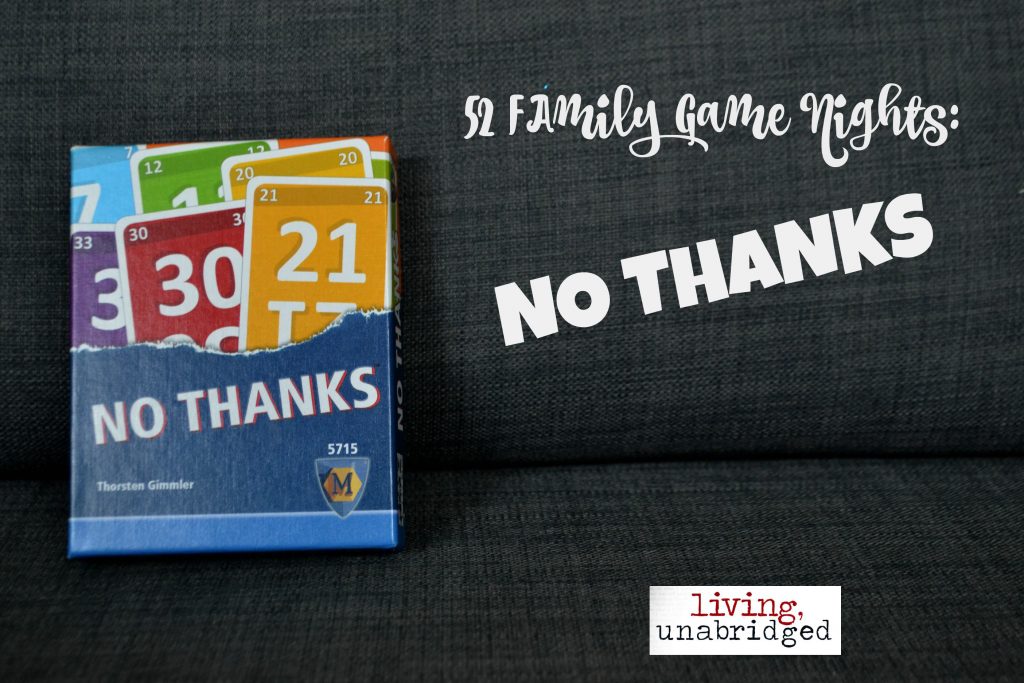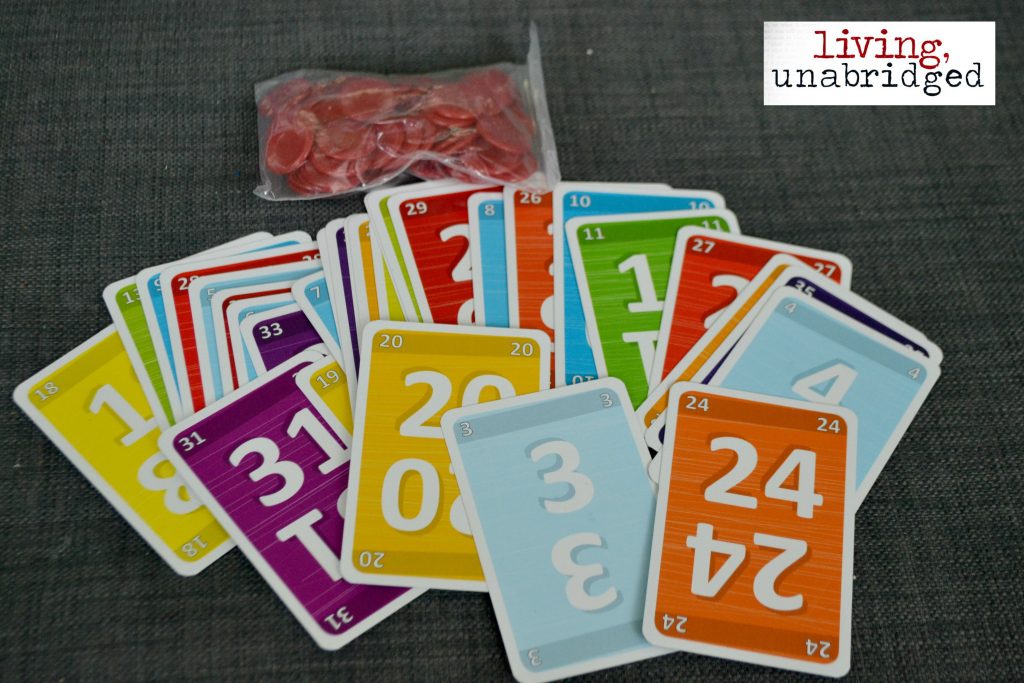Never fear, the 52 Family Game Nights series has not been forgotten! My resident game designer is back this week to tell you about one of his recent favorite card games.
Family Game Night #28: No Thanks!
How to Play No Thanks
To start, players are given eleven bidding chips that are small enough to be held in your hand (because you’ll want to keep your chips hidden in this game). Each card in the deck features just one number, from 3 to 35. The latest edition presents each card as a slightly different color, making it easier to see how close the numbers are to each other.
Shuffle the deck and remove nine cards at random. Place these back in the box without revealing them. The object of the game is to have the lowest score; each card you take will potentially add to your score, and any chips you have leftover reduce your score by 1.
On each turn, the top card is revealed, and you have a simple choice:
1) Place a chip on the card or
2) take the card and any chips on it
For example, you might see the 12 come up. You really don’t want twelve points added to your score, so you add a chip to the card. Then the next player can either take the card and your chip or add another chip. Since each chip counts as -1 point at the end, 12 with a chip is essentially worth 11 points. The other players might all add chips, presenting you with another opportunity to take the card—this time with several chips. If you are low on chips, you might go for it. If you don’t have any chips you must take the card, so it’s always nice to have some chips in reserve.
Strategy in No Thanks!
If you can collect a sequential series of cards (e.g., 8, 9, 10, 11), only the lowest card in the sequence is scored.
This elevates a mildly amusing card game to an addictive experience. If you can take the right cards, you might be able to get free chips and a lower score at the same time. The only catch is that the card you need to connect a sequence might be one of the nine removed from the game at the beginning. Each player will have to decide how much of a risk they're willing to take.
Winning No Thanks!
When the deck runs out, players add all their scored cards and subtract 1 for each chip they still have. The player with the lowest score is the winner.
No Thanks! works well with gamers of all experience levels and ages, though smaller children can have some trouble grasping some of the strategy. It can be very difficult to resist taking too many cards. Game play is quick, though, allowing time for multiple games and chances to try again.
Summary of No Thanks!
Number of Players: 3-7
Recommended Ages: The box says 8+, but we've played with 5 & 6 year olds
Reading Required: No, but the child should be able to sequence numbers up to 35
It’s always great to find a simple game that’s easy to teach and immediately captures the attention of the players. No Thanks! turns bidding on its head with just a few ingenious twists, can be played in about 20 minutes, and offers a high amount of fun for its low (usually less than $10) price tag.
Karen here: I wanted to make so many puns based on the name of this game, but I think I'll just leave those to your imagination. This card game meets many of my criteria for a fun family game: it's easy to learn, it's quick to play, and it's inexpensive. Don't say "no thanks" to this one. (Sorry, turns out I couldn't resist.)



